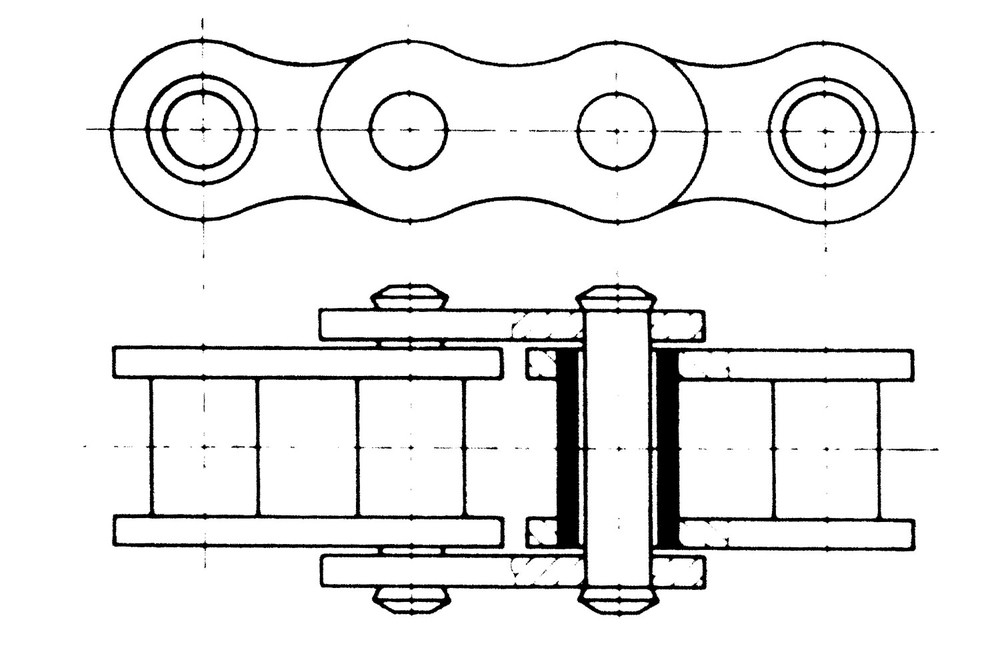

Contact Persons
Address:
Kettenfabrik Unna GmbH & Co. KG
Max-Planck-Str. 2
59423 Unna
Phone:+49 (0) 2303-8806-0
Fax:+49 (0) 2303-8806-88
E-Mail: information@ketten.com
Unlike round steel chains, engineering chains move only in one dimension. Their preferred use is as drive or haulage chains or for taking up static or dynamic loads, as transport or gear chains for power transmission. Steel link chains transmit power without slipping and avoid bending stress by articulation.
3 dimensions define an steel link chains:
Pitch:
The inside length of the chain link, i.e. the distance between pin centers
Roller, sleeve or pin diameter:
The outer size of the round parts between the inside plates
Inside width:
The distance between the inside plates (also referred to as clear width)
Steel link chains consist of components which either transmit tensile force or allow the turning of two links relative to each other. The inner and outer links form the articulation of the steel link chains. The articulation area is calculated by the projection of the pin onto the supporting surface of the inner link.
Basically, steel link chains can be divided in five different types: Pin chains, bush chains, roller chains, inverted tooth chains and special chains. These five groups can be divided further into a large number of standard and non-standard steel link chains.

Pin chains represent the simplest steel link chains design. The plates rotate directly on the pins. The area of the articulation is small. Pin chains comprise Galle chains, Fleyer chains and multiple draw bench chains. Most pin chains are used as load or haulage chains.

Bush chains are different from pin chains in that the inside plate is pressed on the bush, which is pushed on the pin with a running sit. The articulation area is larger that that of a pin chain with a correspondingly smaller pressing and, consequently, higher wear-resistance in the articulation. Bush chains are used as load and haulage chains, usually in slow moving systems.

The difference between a roller chain and a bush chain is that the former has a kelly roller slipped over the bush to reduce the wear between the bushes and the sprocket teeth. The roller avoids sliding friction between the chain and the sprocket tooth. The articulation area is somewhat smaller than that of a bush chain. Roller chains find wide use as load transport, control and gear chains. The design of the rotary chain is similar to that of the roller chain; it has bent plates for higher elasticity. Rotary chains are installed in heavyduty gear systems exposed to impulsive load.

Inverted tooth chains transmit force between the chain and the sprocket through the special shape of the plate, not through pins, bushes or rollers as in the other chains. This makes the design of inverted tooth chains fundamentally different. To control the chain movement, plates are installed across the axial direction in the middle (inner guide) or at the sides (outer guide) of the chain. Inverted tooth chains have small articulation area and a smaller breaking load than roller chains.